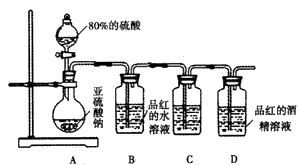| 完形填空。 | |||
| Children find meanings in their old family tales. When Stephen Guyer's three children were growing up,he told them stories about how his grandfather,a banker,__1__all in the 1930s,but did not lose sight of what he valued most.In one of the darkest times__2__hisstrong minded grandfather was nearly__3__,he loaded his family into the car and__4__them to see family members in Canada with a__5__,"There are more important things in life than money." The__6__took on a new meaning recently when Mr.Guyer downsized to a__7__house from a more expensive and comfortable one.He was__8__that his children,a daughter,15, and twins,22,would be upset.To his surprise,they weren't.__9__,their reaction echoed(共鸣) their great grandfather's.What they__10__was how warm the people were in the house and how__11__of their heart was accessible. Many parents are finding family stories have surprising power to help children__12__hard times.Storytelling experts say the phenomenon reflects a growing__13__in telling tales,evidenced by a rise in a storytelling events and festivals. A university__14__of 65 families with children aged from 14 to 16 found kids' ability to __15__parents' stories was linked to a lower rate of anger and anxiety. The__16__is telling the stories in a way children can__17__.We're not talking here about the kind of story that__18__,"When I was a kid,I walked to school every day uphill both ways, barefoot in the snow." Instead,we should choose a story suited to the child's__19__,and make eye contact(接触)to create "a personal experience".We don't have to tell children__20__they should take from the story and what the moralis. | |||
| ( )1.A.missed ( )2.A.when ( )3.A.friendless ( )4.Afetched ( )5.A.hope ( )6.A.tale ( )7.A.large ( )8.A.surprised ( )9.A.Therefore ( )10.A.talkedabout ( )11.A.much ( )12.A.beyond ( )13.A.argument ( )14.A.study ( )15.A.provide ( )16.A.trouble ( )17.A.perform ( )18.A.means ( )19.A.needs ( )20.A.that | B.lost B.while B.wortess B.allowed B.promise B.agreement B.small B.annoyed B.Besides B.caredabout B.many B.over B.skill B.design B.retell B.gift B.write B.ends B.activities B.what | C.forgot C.how C.penniless C.expected C.suggestion C.arrangement C.new C.disappointed C.Instead C.wroteabout C.little C.behind C.interest C.committee C.support C.fact C.hear C.begins C.judgements C.which | D.ignored |
1-5BACDD 6-10ABDCB 11-15ADCAB 16-20DCCABB


